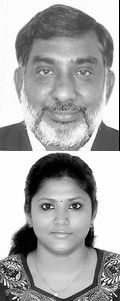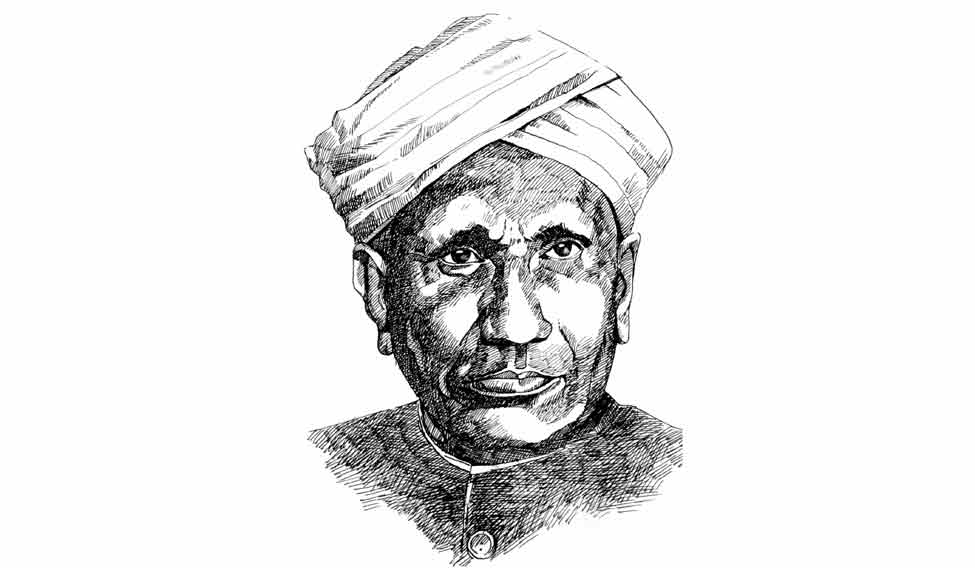
Curiosity is the key to discovery. Chandrasekhar Venkata Raman’s curiosity on why the ocean appeared blue during a voyage laid the foundation of what came to be known as the Raman effect. Raman scattering is a process where light interacts with matter and the electrons comprising it get polarised. The scattered light thus produced contain information which is specific to the molecule, thereby revealing its structural identity like a fingerprint.
C.V. Raman observed the scattering of solvents using sunlight as a source and eye as a detector. It is material specific, selective, and in particular, provides a fingerprint of the molecule. Raman scattering observed as a spectrum can be recorded for almost any material in any state, including under extreme conditions. Therefore, it did not take the scientific community long to recognise the potential of this technology for which Raman was awarded the Nobel Prize for Physics in 1930, just two years after its discovery.
Raman scattering is a non-destructive technique that can be applied to any field, from archaeology to space research and from materials to biology. This technology has been used extensively to decipher molecular level information. Raman microscopy has made it possible to probe very small quantity of materials with high spatial resolution. The true success of an invention or discovery can only be measured by the impact it has on society. This is true in the case of Raman spectroscopy as well. This tool and its variants are so powerful that it has been applied not only to understand molecular interactions, but also for diagnosing diseases such as cancer and also in biomedical imaging.
In clinical application, Raman spectroscopy can be used for distinguishing diseased and normal states as it clearly provides markers for a particular disease thereby making new information available to the clinician. New avenues for the use of Raman spectroscopy are opening up every day. The recognition of this technology also comes from the amount of research and development that is being carried out in top universities such as Harvard and Oxford.
In India, the land of its discovery, research on Raman spectroscopy is beginning to turn towards socially relevant applications. Our group at the Indian Institute of Science, Bengaluru, is dedicated to Raman spectroscopic research from fundamental aspects as well as cutting edge research. From understanding molecular dynamics to developing novel Raman-based techniques, we strive to explore all possible facets of Raman spectroscopy.
In addition, we are trying to understand how cancer manifests and spreads by studying cells and tissues using Raman microscopy and imaging. Furthermore, we are studying diseases such as sepsis and neurodegenerative diseases using Raman imaging. In a recent breakthrough, we have successfully identified the bacteria causing tuberculosis among other varieties of bacteria using Raman spectroscopy coupled with multivariate analysis. One of the challenges in our country and many such developing nations is early diagnosis of tuberculosis. With this breakthrough, we are confident about detecting tuberculosis within hours. It would help clinicians treat patients on time and ensure quick recovery.
In another breakthrough, we have developed a new Raman spectroscopy based technique called Universal Multiple Angle Raman Spectroscopy (UMARS). It can be used for the detection of concealed explosives packed in containers noninvasively. This technique can be used at airports, shopping malls and at checkpoints for screening liquids in bottles and other containers. The other potential application is in biomedical diagnosis.
Raman spectroscopy has been used for the analysis of food, in pharmaceutical industry, for environmental monitoring, in mineralogy and many other fields. With the technological advancements in lasers, detectors, optics and spectrometers along with tremendous growth in nanotechnology, Raman spectroscopy is undergoing rapid development. New Raman-based methods are being studied and developed. New techniques such as Surface Enhanced Raman Spectroscopy (SERS) and Tip Enhanced Raman Spectroscopy (TERS) are pushing the detection limit of this technology to single molecule level. Had he been alive, Raman would have been elated to witness such advancements.
Siva Umapathy is chairman, department of inorganic and physical chemistry, Indian Institute of Science, Bengaluru. Sanchita Sil is with the Indian Institute of Science.





